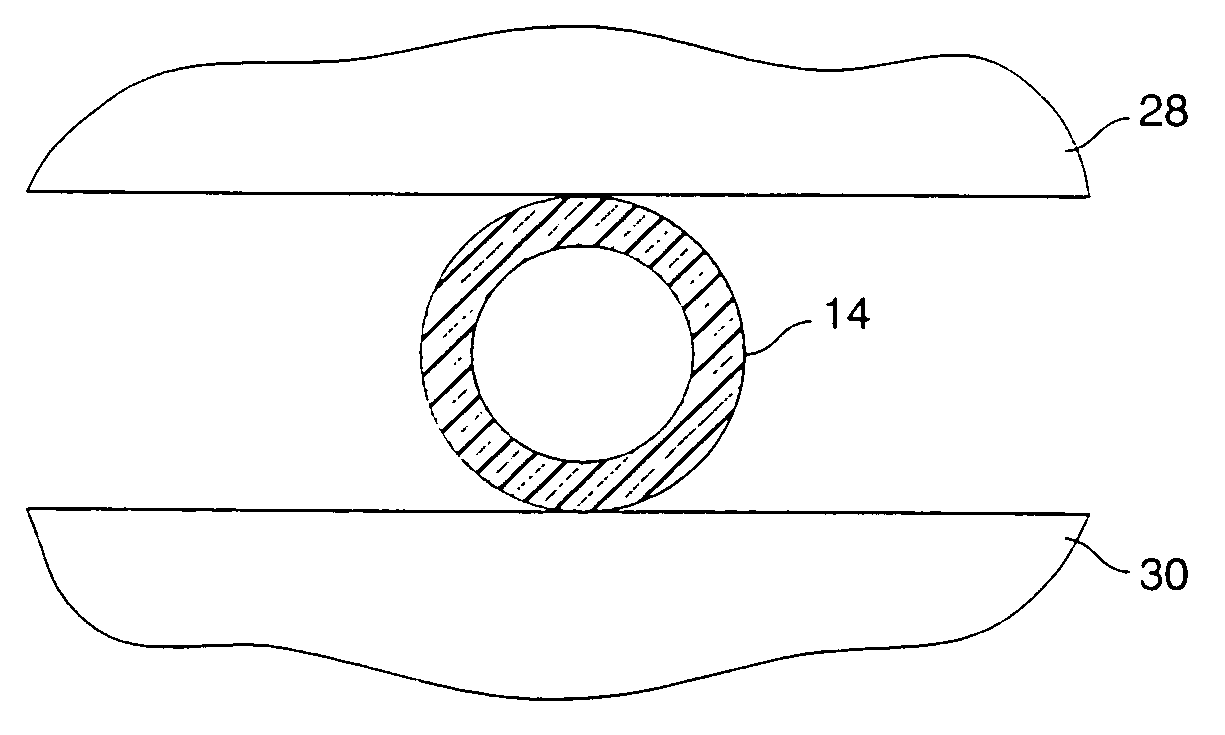[0012]The present invention provides devices and methods for percutaneously accessing a body lumen through an implanted
access port. More particularly, the present invention provides methods and devices for locking open a valve
assembly within an
access port by the act of inserting the access tube.
Insertion may involve simply advancing the access tube in the forward direction, or it may involve additional or alternative movements such as rotation. Reversal of the needle movement and / or removal of the access tube will in turn release the lock and close the valve
assembly. The present invention provides a “positive” locking action and reduces any variability in access, such as a “half-opened” valve, and reduces the risk of
blood loss due to valve closure during fluid transfers.
[0013]The implantable access ports for use with the present invention are preferably capable of high volume withdrawal and / or return of blood or other fluids, particularly for patients undergoing an
extracorporeal blood therapy, such as
hemodialysis,
hemofiltration, hemodiafiltration, apheresis, or the like. The
vascular access ports allow for high volumetric rates of blood or other fluid flow therethrough, typically allowing for rates above 250 ml / min, usually above 300 ml / min, preferably at least 400 ml / min, and often 500 ml / min or higher, using a single needle or other access device. Such high volumetric flow rates are quite advantageous in reducing the time required for performing the
extracorporeal blood treatment, particularly for otherwise lengthy treatments which require large total volumes of treated blood, such as
hemofiltration. To ensure high flow rates and
minimum time requirements, it is useful to know that the valve is completely open, allowing full access to the body lumen through the conduit while the access tube is in place. Likewise, it is beneficial to know that the valve is completely closed when the access tube is removed, either by careful disengagement or by accidental pull-out, since such high flow rates will cause a significant amount of fluid to be lost if the valve is unknowingly left open.
[0016]The space-filling elements of the latch typically comprise a pair of balls, usually opposed stainless steel balls similar to small ball bearings, disposed between the passage in the base and the bore in the valve. In valve assemblies that open and close with the action of a spring-loaded
plunger, the balls are spring-biased to close against one another between the passage and the bore in the valve
assembly. In one embodiment, the
insertion of the access tube through the passage forces the balls apart and the access tube passes into the bore of the valve assembly. As the balls move apart (outward), they also move downward into receptacles. This movement is directed by interior walls sloping outward between the passage and the bore. Such action depresses the
plunger, which opens the valve. While the access tube is inserted, the balls are held against the tube and in the receptacles by the spring-loaded
plunger and the angled interior walls. Not only does this lock the valve open, but the
static friction of the balls against the tube may help to hold the access tube in the passage. Interior walls with an angle of 50 degrees or greater (relative to a lateral plane through the port) have been found to provide higher frictional forces for needle retention. Removal of the tube allows the balls to move out of the receptacles in an upward direction, by action of the spring-loaded plunger, and an inward motion directed by the angled interior walls so that they are again in contact in the passage. In alternative embodiments,
insertion of the access tube may be coupled with a rotational movement of the access tube. Such rotational motion would force the balls apart and facilitate the movement of the balls into the receptacles, thus opening the valve. Reversal of such movement by the access tube and / or removal of the access tube subsequently closes the valve.
[0018]The tube seat will remain locked in its depressed condition until the access tube is removed from the base. By forming the tube seat from (or lining the tube seat with) a hard material, preferably a material harder than the needle or other access device which is to be used, the likelihood of damage to the valve can be greatly reduced. Moreover, the tapered tube seat design is not prone to damaging needles when they are inserted into the port. Thus, the port of the present invention is particularly suited for use with self-penetrating, sharpened needles, such as
fistula needles, unlike many ports of the prior art.
 Login to View More
Login to View More  Login to View More
Login to View More 


